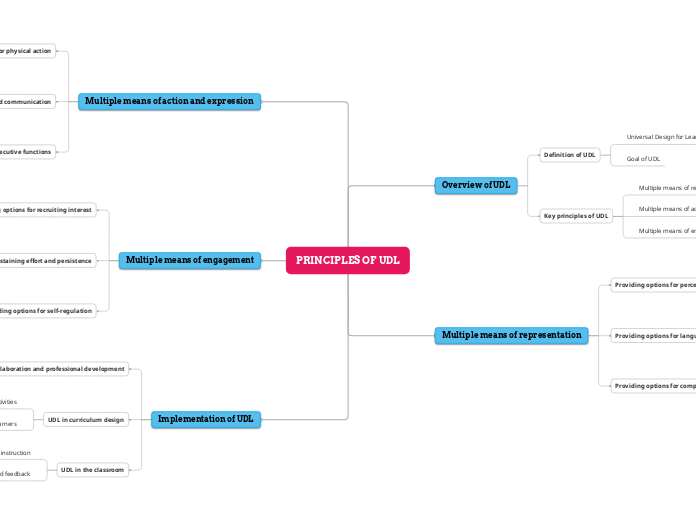PRINCIPLES OF UDL
Overview of UDL
Definition of UDL
Universal Design for Learning
Goal of UDL
Key principles of UDL
Multiple means of representation
Multiple means of action and expression
Multiple means of engagement
Multiple means of representation
Providing options for perception
Different modalities
Multiple formats
Providing options for language and symbols
Different languages
Visual aids and supports
Providing options for comprehension
Chunking information
Graphic organizers and diagrams
Multiple means of action and expression
Providing options for physical action
Different tools and technologies
Assistive devices
Providing options for expression and communication
Written expression
Oral communication
Providing options for executive functions
Planning and organizing
Goal setting and self-monitoring
Multiple means of engagement
Providing options for recruiting interest
Choice and autonomy
Relevant and meaningful content
Providing options for sustaining effort and persistence
Clear goals and expectations
Scaffolded support
Providing options for self-regulation
Reflection and self-assessment
Self-monitoring strategies
Implementation of UDL
Collaboration and professional development
Teacher training
Collaborative planning with colleagues
UDL in curriculum design
Designing flexible learning activities
Adapting assessments for diverse learners
UDL in the classroom
Differentiating instruction
Providing ongoing support and feedback
